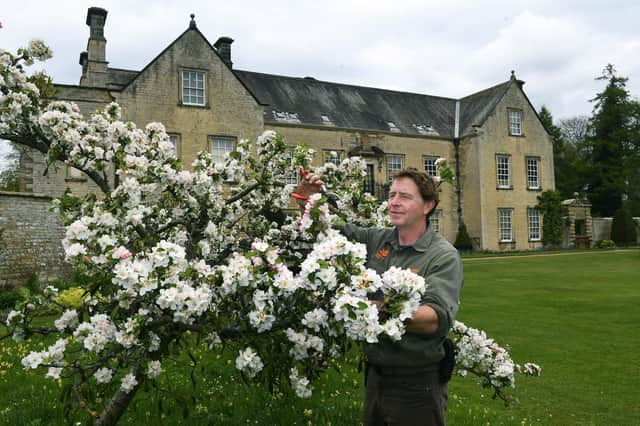People urged to take part in National Trust's #BlossomWatch Day campaign to celebrate wellbeing benefits of "nature's confetti"


The National Trust is running the campaign to celebrate spring blossom and share its benefits for our wellbeing and the biodiversity of our planet.
Thousands of people have already posted their pictures on social media channels as the relatively mild winter, little snow and a warm and dry March saw blossom emerge early in many areas around the country.
Advertisement
Hide AdAdvertisement
Hide AdA sharp dip in temperatures at the end of the month to minus 9.1 degrees Celsius and some snowfall caused some delicate blossoms like magnolia to become ‘burnt’ by the harsh conditions and unable to reach their full glory.
But with temperatures gradually rising to a more seasonal norm, the charity hopes spring will be back on track.
Whether in parks, along the roadside, in their own gardens or enjoying in the countryside, the charity is encouraging people to record blossom by sharing their experiences and joy brought on by blossom, wherever they live.
And according to Nick Fraser, senior gardener at Nunnington Hall in North Yorkshire, we should be able to enjoy a good display this year.
Advertisement
Hide AdAdvertisement
Hide Ad“We seem to be on schedule for a good blossom season,” Nick said.
“The blossom on the pear tree in the orchard is just starting to appear and we are currently anticipating the apple blossom to start showing towards the end of the month.
“It seems that the risk of late frosts have now subsided so hopefully we will escape any plunges in temperature. Last year temperatures plummeted to -12 degrees Celsius just as the apple blossom started to appear which meant the pollinators didn’t fly, and therefore pollinate, and we had one of the worst apple harvests for many years.
“However, we hope that with the enforced ‘rest’ that the trees had last year, that this year will bring on a bumper crop.
Advertisement
Hide AdAdvertisement
Hide Ad“But we do need to have some rain. We need enough sunshine and dry spells for pollinators to emerge and to pollinate and ‘set’ the fruit, but enough rain between now and June to encourage the fruit to grow. If we don’t get enough then we will be at risk of ‘June fruit drop’ which is when the trees don’t get enough rain and the trees reject some of the fruit that’s growing and concentrates on growing only the number of apples that the tree can cope with. Therefore, getting the right combination of weather is vital over the next couple of months.”
The National Trust said this year’s #BlossomWatch campaign, which officially launched on March 24, has already seen over 53,000 images shared across social media platforms.
Some of the images shared on social media, along with personal dedications, will also feature in adverts in 16 UK cities.
One of the images chosen to feature in adverts in Manchester was taken in Preston by 47-year-old Sarah Lawrenson who said she had been inspired to look for wildflowers during the first Covid lockdown in 2020.
Advertisement
Hide AdAdvertisement
Hide Ad“It was to bring interest to my daily exercise with my teen sons,” Sarah said. “I was furloughed from my job and future seemed so uncertain that I found great comfort in seeing the seasons pass through my love of both nature and photography. My parents were shielding and I loved the idea of bringing nature back to those stuck inside.”
Franz Zubieta Mariscal’s image which was taken at the University of Nottingham campus will appear in the city, and his chosen dedication references the hostilities in Ukraine.
“For me, blossom represents the main virtue of mankind: resilience,” he said. “Even if suffering is an inevitable feature of all existence, it hides the potential for transformation. So, there is always a point at which cold becomes light and darkness turns into colour.”
Agne Galdikaite, 28, from Teddington, whose photograph taken in Kingston-upon-Thames will be used in London, said: “I remember seeing several Comma butterflies sipping nectar from the blossoms and just admiring their fragility and the overall beauty.
Advertisement
Hide AdAdvertisement
Hide Ad“Early blossoms are a sign of nature awakening and offering essential nourishment to the species such as butterflies or bees that emerged from cold winter. I’m happy to be part of #BlossomWatch and hoping this campaign will inspire many others to go outside and truly appreciate the joy of nature.”